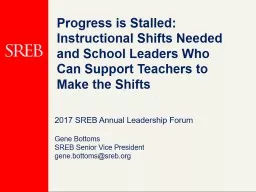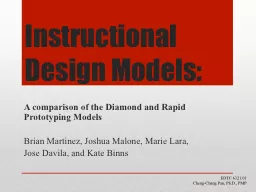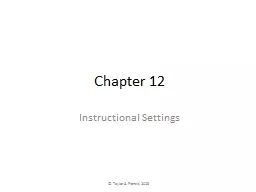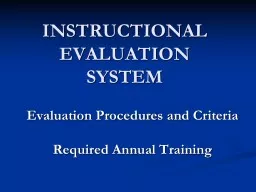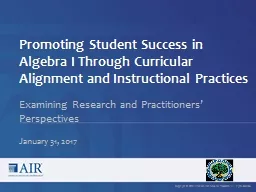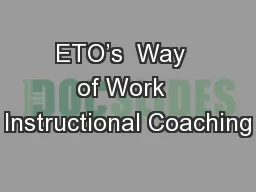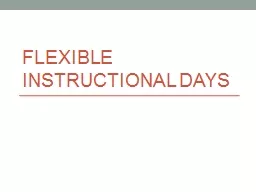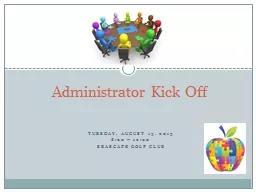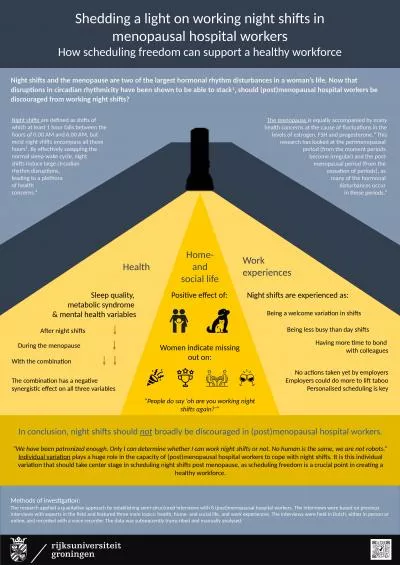PPT-Progress is Stalled: Instructional Shifts Needed
Author : lindy-dunigan | Published Date : 2018-09-25
and School Leaders Who Can Support Teachers to Make the Shifts 2017 SREB Annual Leadership Forum Gene Bottoms SREB Senior Vice President genebottomssreborg Whos
Presentation Embed Code
Download Presentation
Download Presentation The PPT/PDF document "Progress is Stalled: Instructional Shift..." is the property of its rightful owner. Permission is granted to download and print the materials on this website for personal, non-commercial use only, and to display it on your personal computer provided you do not modify the materials and that you retain all copyright notices contained in the materials. By downloading content from our website, you accept the terms of this agreement.
Progress is Stalled: Instructional Shifts Needed: Transcript
and School Leaders Who Can Support Teachers to Make the Shifts 2017 SREB Annual Leadership Forum Gene Bottoms SREB Senior Vice President genebottomssreborg Whos GainedLost Ground in the New Economy. Learning Zones & Curriculum. FCIM Support. Icebreaker: Stand If You’re Like Me. You were born outside of Florida.. You like to do activities involving water.. You like to move around and interact with people during a professional development.. 4. Tier 2: Targeted Group Interventions. Tier 2: Targeted Group Interventions. Assessment. Monitoring Progress. Making . data-based instructional . decisions. Instructional Practices. Re-analyzing the learning problem. Lyn . DeLorme. , PhD. Star Quilt Framework. Star Quilt Framework. To highlight the orientation of the study. As a metaphor for the research journey. As a visual organizer for the findings. Instructional . July 2015 US cybersecurity: Progress stalled Key �ndings from the 2015 US State of Cybercrime Survey 1 US cybersecurity: Progress stalled The 2015 US State of Cybercrime Survey was co-sp A comparison of the Diamond and Rapid Prototyping Models. Brian Martinez, Joshua Malone, Marie Lara, . Jose . Davila, . and Kate . Binns. EDTC 6321.01. Cheng-Chang Pan, Ph.D., PMP. . Diamond Model. A systems oriented Instructional Design Model based on the design generated from . © Taylor & Francis 2015. INSTRUCTIONAL SETTINGS MATTER . IDEA specifies that students must have access to an array of educational placements.. Instructional settings can include typical school classrooms or specialized placements.. Evaluation Procedures and Criteria . Required . Annual Training. FLORIDA STATUTE. 1012.34. Personnel Evaluation Procedures and Criteria. EVALUATION SYSTEM. REQUIREMENTS/ PROCEDURES . FS 1012.34. The evaluation system must:. FCS . February . Update, . 2016. Presented by . Mary Meck Higgins. , Ph.D. ., R.D., L.D., . FAND (Fellow . of the . Academy . of . Nutrition . and. Dietetics. ), . KSRE . Human Nutrition Specialist. Copyright © 2013 American Institutes for Research. All rights reserved.. January 31, 2017. Examining Research and Practitioners’ Perspectives. Welcome. Kirk Walters, Moderator, AIR. 2. Present findings from recent U.S. Dept. of ED-funded project on promoting success in algebra for struggling students. Essentials. Education Transformation Office (ETO). Effective coaches have to care deeply about teachers and students, and they also clearly have to communicate to others that they care.. Each one of you holds the “KEY” to success.. Today’s Agenda. Objective: To explain the change in price and quantity when there is a shift in both supply and demand. . Essential Skill: To demonstrate an understanding of concepts. . Review of Single Curve Shifts. Overview. Flexible Instructional Days (FIDS) employ non-traditional strategies to provide a continuity of instruction on regularly-scheduled school days during which . circumstances . necessitate an alternate approach. 8:00 – 12:00. Seascape Golf Club. Administrator Kick Off. Description of Practice. Performance Tasks: . . They can best be described as collections of questions and activities that are coherently connected to a single theme or scenario. These activities are meant to measure capacities such as depth of understanding, research skills, and complex analysis, which cannot be adequately assessed with selected- or constructed-response items.. menopausal hospital workers. How scheduling freedom can support a healthy workforce. Night shifts and the menopause are two of the largest hormonal rhythm disturbances in a woman’s life. Now that disruptions in circadian rhythmicity have been shown to be able to stack.
Download Document
Here is the link to download the presentation.
"Progress is Stalled: Instructional Shifts Needed"The content belongs to its owner. You may download and print it for personal use, without modification, and keep all copyright notices. By downloading, you agree to these terms.
Related Documents

